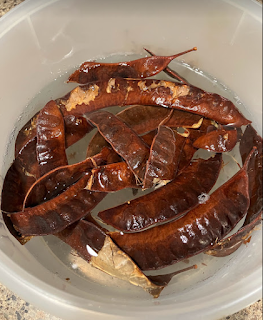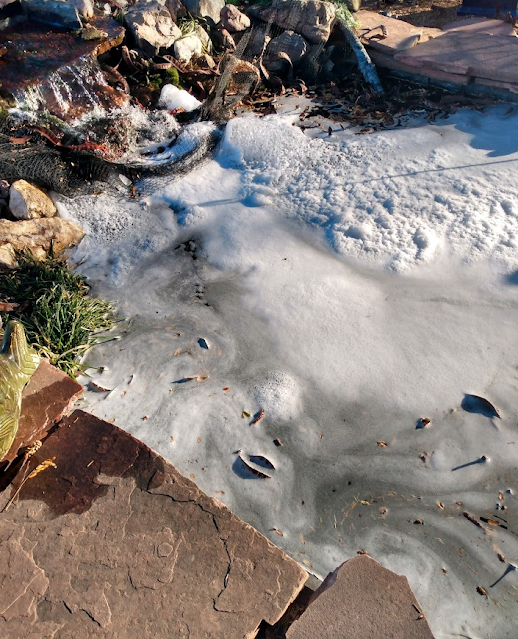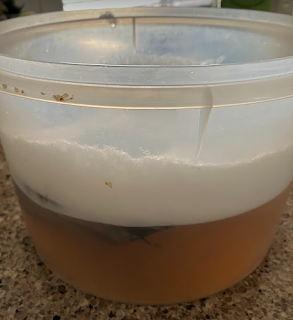Posted By: John Murgel, Douglas County Extension
The recent windy days we had across the Front Range recently
made me remember a strange phenomenon from a similarly windy period last
fall. My aunt, an avid water gardener,
awoke to find her largest pond--the one with the waterfall--awash in fluffy
suds. It reminded me of when students
would pour dish soap into the fountains in college.
Setting aside such sophomoric stunts in a quiet back yard,
what else could be going on?
Owing to the season, a large number of ripe honeylocust (Gleditsia triacanthos) pods were adorning the local trees, including one in the same yard as the pond. The wind blew many of them down; they littered the ground.
Beans, water, and foam. My mind turned to Aqua faba, the vegan foam sensation. (Aqua faba is Latin for “bean water”—don’t things sound sophisticated in Latin?) I remembered reading a recipe where the water from canned beans could be whipped into a meringue, like egg whites, since the complex sugar molecules leached from the beans could form complex networks similar to the proteins in eggs. These same compounds are what make certain beans—notably soybeans—a source of emulsifying agents used in processed food.

Luckily for me, honeylocusts are common trees. A quick trip to a front yard down the block
provided a shopping bag full of pods. I
dropped some pods into a bucket, covered them with water, and let them sit
overnight. Then, when my wife was not home (I don’t think she reads the blog),
I got out the hand mixer and got to work.
I can't prove that no one put dish soap in my aunt's pond, but I think the honeylocust pods are a prime suspect for the foam—the overnight soak plus the agitation of the waterfall created the perfect conditions for sudsing.
The pond-foam eventually subsided on its own, without harming the fish or the plants. (The primary risk being from the organic matter addition causing a potential drop in oxygen levels--the waterfall aeration was not just a problem-causer here).
Maybe it was the honey locust trees on campus, too?






No comments:
Post a Comment